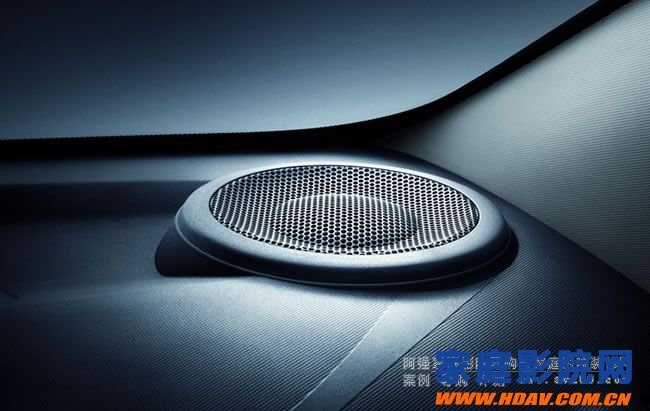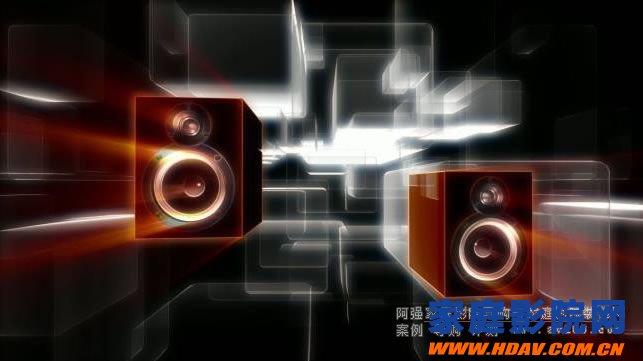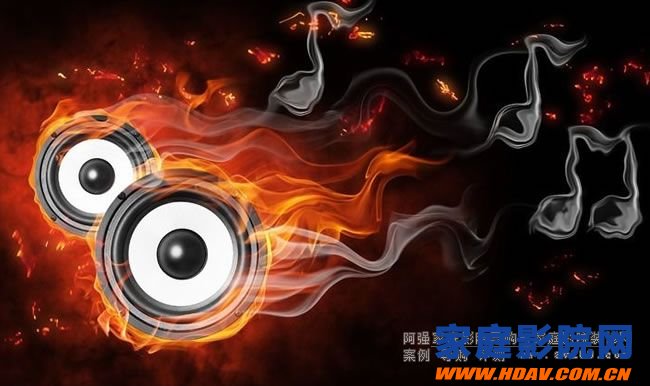How much power does the speaker need?
[Home Theater Network HDAV.com.cn] How much power amplifier is needed to drive a particular speaker? There is no definitive answer to this question. In fact, there are three different factors to consider when selecting the power amplifier for the speaker. 1. Understanding speaker power For example, the power value on some speaker parameter tables indicates that the speaker has passed the standard power test.
How much power amplifier do you need to drive a particular speaker?
There is no definitive answer to this question.
In fact, there are three different factors to consider when selecting the power amplifier for the speaker.
1, understand the speaker power
For example, the power value on some speaker parameter tables indicates that the speaker has passed the standard power test. In this test, the speaker was "operated" to damage or malfunction. The rated power value obtained by the test will be used as a comparison point and compared with the rated power of other speakers. This value does not necessarily need to correspond to the best rated power of the amplifier, nor is it used to measure the "safe" power amplifier power that should be used under real operating conditions.
discuss:
The main purpose of the speaker power test is to understand the limits of the speaker's thermal power processing. In the case of continuous input of the signal (measured in RMS voltage), the critical point of permanent damage or failure of the loudspeaker due to heat is the thermal power processing limit of the loudspeaker. In this test, the speaker is also input with a peak signal level that is 6 dB above the RMS level of the input signal. To some extent, these peak levels test the peak power handling capabilities of the speaker.

The pink noise signal used to test full-range loudspeakers is modeled as a standard EIA (American Electronics Industry Association) frequency response shape that mimics the average frequency response shape of a typical music program.
However, this shaped pink noise signal does not represent all real audio signals. Naturally, the response of the speaker to it is not the same as the response of the speaker to the real audio signal. Generally speaking, in terms of thermal limit, when the speaker reproduces this pink noise signal, the typical music or voice signal is subject to more load. However, some audio signals - such as rock and dance music, and even some classical music - will put more load on the speakers than the pink noise signal that is shaped. A strong home theater shopping guide network welcomes you!
Since there are no universal standards, most professional speaker manufacturers use different test methods to obtain power parameters. Surprisingly, although the test methods are different, sometimes the results are very close. These values ​​are very different, with thermal power, continuous power, RMS power, AES power, and EIA power. The difference in these power values ​​is mainly due to the difference in test methods or test equipment, and the fact that the power handling capabilities of the speakers are not the same. Therefore, speakers with a power factor of around ±1.5 can be considered to have the same processing power. A factor of around ±1.5 is approximately equivalent to an output tolerance of ±1.5 dB. For example, a speaker rated at 600W and a speaker rated at 900W, the capacity is likely to be consistent when dealing with the power of a real audio signal.
Please note
The "music", "program", "peak" or similar power value is typically two or more times the thermal power value (or RMS and continuous power, etc.). However, these values ​​are rarely values ​​measured by facts. Typically, these power values ​​only indicate that the speaker can handle peak inputs above the maximum rated thermal power limit.
2. Select the power amplifier with the right rated power
The amplifier of the appropriate power rating should be selected for the loudspeaker based on the desired sound level and the type of audio signal.
discuss:
Do not confuse the indicated power rating with the maximum sound level that can be achieved. The maximum output is a function of amplifier power and speaker sensitivity. Therefore, a speaker with a sensitivity of 97dB (1W@1M) and a 100W amplifier has the same maximum output as a speaker with a sensitivity of 94dB and a power of 200W.

Speaker drivers, especially compression drivers, are typically better able to withstand transient peak power than drivers in power testing. Dynamic audio signals like percussion have very high instantaneous peak levels; while audio signals like speech, the levels are constantly changing. In order to make full use of the peak processing function of the speaker and avoid clipping of the power amplifier, a power amplifier with a rated power greater than the power of the speaker should be selected to reproduce the peak level of the audio signal.
For low-dynamic audio signals, such as heavy metal rock and high-compression music, a power amplifier with a rated power less than the speaker power may be required to avoid causing too much load on the thermal power processing of the speaker.
In addition, it is sometimes possible to reproduce low-level background music using a 500W continuous power (or RMS power) speaker. At this time, only a 25W amplifier can achieve the desired sound level.
Therefore, the power amplifier required for a particular application may have a power rating that is much higher or lower than the power indicated by the speaker.
As an overview method, it is assumed that in the case of proper operation (see Section 3), in order to achieve full performance of the speaker and achieve a suitable sound output level, it is recommended to use a power amplifier rated at twice the power of the speaker. This allows the amplifier to reproduce a peak signal that is 6 dB higher than the indicated power. This is consistent with the test signal and the power amplifier output performance used in the power test. However, the method we recommend does not guarantee that the operation will never be lost, which involves the issues we are talking about in the next section.
3, to prevent speaker damage
Preventing damage or malfunction of the speaker is not a function of the power of the amplifier and the rated power of the speaker. To prevent damage to the speakers, the sound system must be properly operated to prevent the speaker from exceeding the limit. If the sound system is not operating properly, even if you use a power amplifier with a rated power much lower than the speaker power, it may cause damage or malfunction. Conversely, if the sound system is operated correctly, even if a power amplifier with a rated power exceeding the speaker's continuous power (or RMS power, average power, etc.) is used, the speaker can be prevented from being damaged or malfunctioning.
discuss:
Proper operation of the sound system includes noting the type of audio signal, controlling the corresponding output level, and operating all electronic equipment to ensure that electronic clipping does not occur within the signal chain.
Examples of improper operations include:
(1) Continuous microphone feedback;
(2) Performing equalization promotion outside the operating frequency range of the speaker;
(3) Excessive equalization and lifting within the operating frequency range of the speaker;
(4) Let electronic clipping exist in the electronic chain, including the mixing console, signal processing equipment or power amplifier;
(5) Over-processing makes the speaker significantly distorted;
(6) Let the power amplifier full power output reproduce continuous tones, such as synthetic tones.
Regardless of the rated power of the speaker and the power of the amplifier used, the above operations can easily cause damage or malfunction of the speaker. It is the responsibility of the audio system operator to ensure that all equipment in the system is operating within the limits of performance. This is the only way to ensure that the speaker will not be damaged or malfunction due to excessive load.

About the speaker "power"
The power tests done by most professional speaker manufacturers actually measure not the power, but the voltage. They measure the RMS voltage value or the average voltage value of the input signal. Then use this value to calculate the power using the traditional formula:
Power = squared voltage / nominal impedance
However, the value calculated by the formula has little basis in practical applications for the following reasons:
(1) The nominal impedance of the speaker does not match the actual impedance. In fact, typical speaker impedances often vary greatly with frequency range.
(2) The speaker is generally a reactive load. This means that it can be used both as an inductor and as a capacitor, depending on the frequency. In a reactive load, the voltage and current are not synchronized, so if the phase angle between voltage and current is not known, the actual power cannot be calculated. Therefore, the power calculation equation must include the phase angle:
Power = (voltage square x cosine phase angle) / impedance
Unless this equation is used to calculate the power of each frequency within the operating range, if used to calculate the total power, the correct result will not be obtained. Usually, only one of the four quantities of the above equation, that is, the voltage, is measured. If you only know the voltage value, you still can't solve the above equation.
Essentially, for a particular power parameter at a particular "nominal" impedance, the voltage is the same whether you look at the speaker or amplifier parameters. For example: 200W under 8 ohm load, whether it is a power amplifier or a speaker, the test voltage is 40V RMS.
So in fact, the power value we use in the audio parameters is just a substitute for the test voltage. However, power is a commonly known parameter that allows you to compare different amplifiers and different speakers. Just remember that academically they do not represent the factual power of the speakers. More fresh and fun home theater information, please pay attention to home theater network (WeChat: cnhifi) http://, the country's most influential home theater audio player interactive media website.
Note: This article was transferred from Aqiang Home Theater Shopping Guide. The article is an independent view of the author and does not represent the position of the home theater network.
Small Machine Room Passenger Elevator
Circular Elevator,Machine Roomless Elevator,Small Machine Room Elevator,Small Machine Room Passenger Elevator
XI'AN TYPICAL ELEVATOR CO., LTD , https://www.chinaxiantypical.com